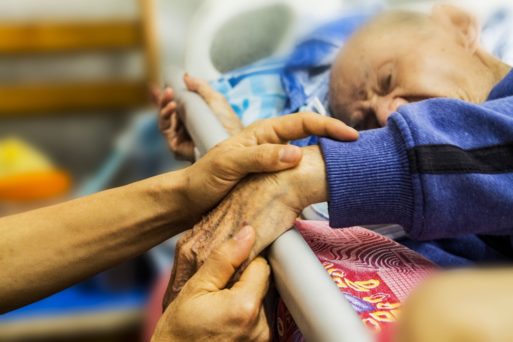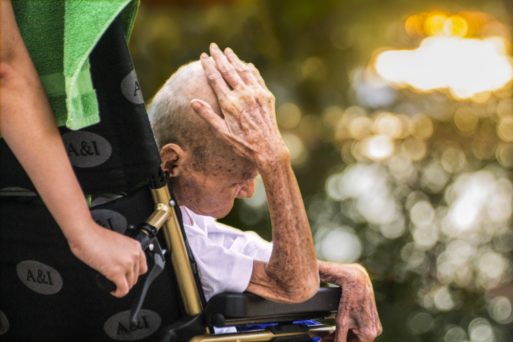Hospice, as most of us understand it, is a model of care that provides comfort and support to people who are terminally ill. The care can be delivered in a hospital, in a nursing home or in the patient’s own home, and includes measures such as medication for pain, oxygen for comfort, turning and positioning, and respite care for family members so they can attend to other areas of their lives. To ensure that hospice resources are allocated appropriately, the Centers for Medicare and Medicaid Services, (which pays for most hospice care) requires that two doctors certify that the person will die within six months if their disease follows its usual course.
 Thus, it’s surprising to learn that one out of every five hospice patients in the United States is actually discharged from hospice while they are still alive. And, according to a 2013 report from the Washington Post, that number is often much higher when for-profit hospice is involved. At the Mobile, Alabama, branch of the for-profit hospice provider AseraCare, for example, an astonishing 78 percent of patients were discharged while still alive in 2012. And at two Alabama branches of the same company, about 50 to 60 percent of hospice patients were discharged alive that same year.
Thus, it’s surprising to learn that one out of every five hospice patients in the United States is actually discharged from hospice while they are still alive. And, according to a 2013 report from the Washington Post, that number is often much higher when for-profit hospice is involved. At the Mobile, Alabama, branch of the for-profit hospice provider AseraCare, for example, an astonishing 78 percent of patients were discharged while still alive in 2012. And at two Alabama branches of the same company, about 50 to 60 percent of hospice patients were discharged alive that same year.
Reimbursement Issues
To be clear, not every live discharge from hospice is initiated by the provider. According to a 2014 report in the New York Times, surveys from the National Hospice and Palliative Care Organization indicate that about one-third of hospice patients leave voluntarily. Nevertheless, that means that the majority of live discharges occur because the provider decided the patient is no longer eligible for hospice care.
Oftentimes, hospice patients are discharged from hospice due to increased pressure from Medicare, said Regina Bodnar, the clinical director of Maryland’s largest hospice provider, Gilchrist Hospice, in an interview with the New York Times. Hospices can no longer rely on staff’s subjective assessment that a patient needs continued care, she explained. Instead, they need “objective data,” such as weight loss, increasing disability or a change in mental status, to prove that patients should be recertified. And if that data is lacking, “you have to seriously consider whether they’re eligible to continue,” Bodnar said.
This also means that if a patient with a terminal illness takes a turn for the better, even for a little while, the provider may be forced to discharge the person or risk sanctions from from Medicare. And the consequences of that can be far-reaching and severe. Several years ago, San Diego Hospice, California’s largest nonprofit hospice at the time, was forced to close its doors and declare bankruptcy after 35 years of serving the community when Medicare denied expected payments and accused it of fraud.
Financial Incentives
Medicare has exerted pressure on hospice providers in other ways too. In an effort to encourage patients to enter hospice sooner, CMS developed a reimbursement structure that paid hospice providers the same daily rate (approximately $150 to $190) for any patient requiring “routine home care.” This incentivized hospices to recruit patients earlier in their disease trajectory, when their needs were few. It also presumably freed up resources to care for sicker patients who were closer to death. However, the flat-rate payments also incentivized hospices to admit patients who weren’t really dying at all…at least not any time soon. This sleight-of-hand allowed unscrupulous providers to get Medicare reimbursement for providing what was, in essence, custodial care.

Hospice patients with Alzheimer’s or Parkinson’s disease may stabilize after being admitted to hospice and linger for many months
Still, the situation is not quite as clear cut as it seems, said Dr. Joe Rotella, the chief medical officer for the American Academy of Hospice and Palliative Medicine, in a statement to NPR. “We see more and more patients that have conditions like Alzheimer’s disease or Parkinson’s disease that don’t always follow a predictable course,” he said. Patients with heart failure, who represented the second largest cohort of hospice patients in 2015, also tend to rally and deteriorate many times before succumbing to their disease.
The Need Persists
Clearly, the introduction of the for-profit hospice model into the U.S. healthcare system has created a number of issues for patients and providers alike. What was once a grassroots effort to provide comfort care to the dying has, in many cases, become a corporate money machine in which patients are treated like pawns.
But not all for-profit hospices are gaming the system, and the need for hospice care for those who are approaching the end of life remains huge. What’s more, despite an almost twofold increase in the number of hospices in the nation over the last 20 years, hospice is still enormously underutilized. According to John Keyserling, former senior vice president for communications and policy at the National Hospice and Palliative Care Organization, most patients who die in hospice do so within 17 days of admission, having missed out on months of comfort, support and improved quality of life.

 One in Five Hospice Patients Is Discharged Alive
One in Five Hospice Patients Is Discharged Alive




 Composting Bodies Is Now Legal in a Dozen States
Composting Bodies Is Now Legal in a Dozen States














